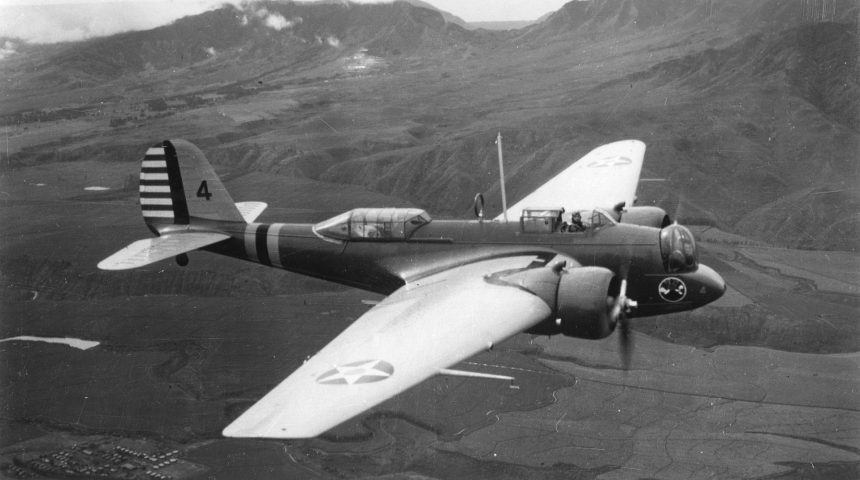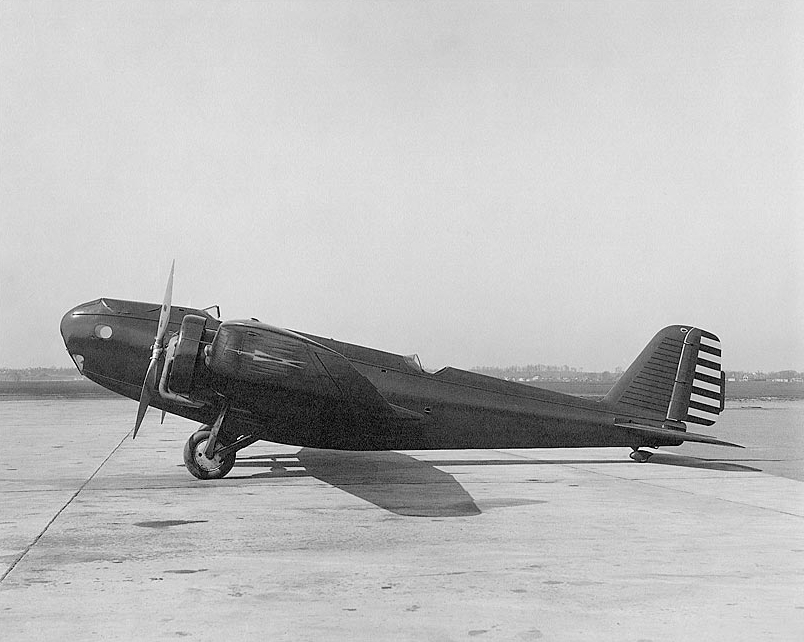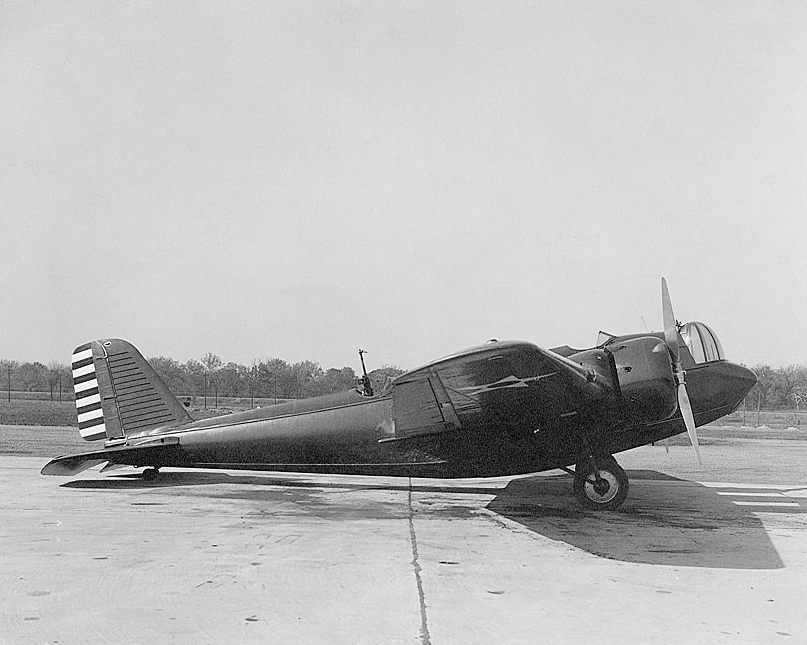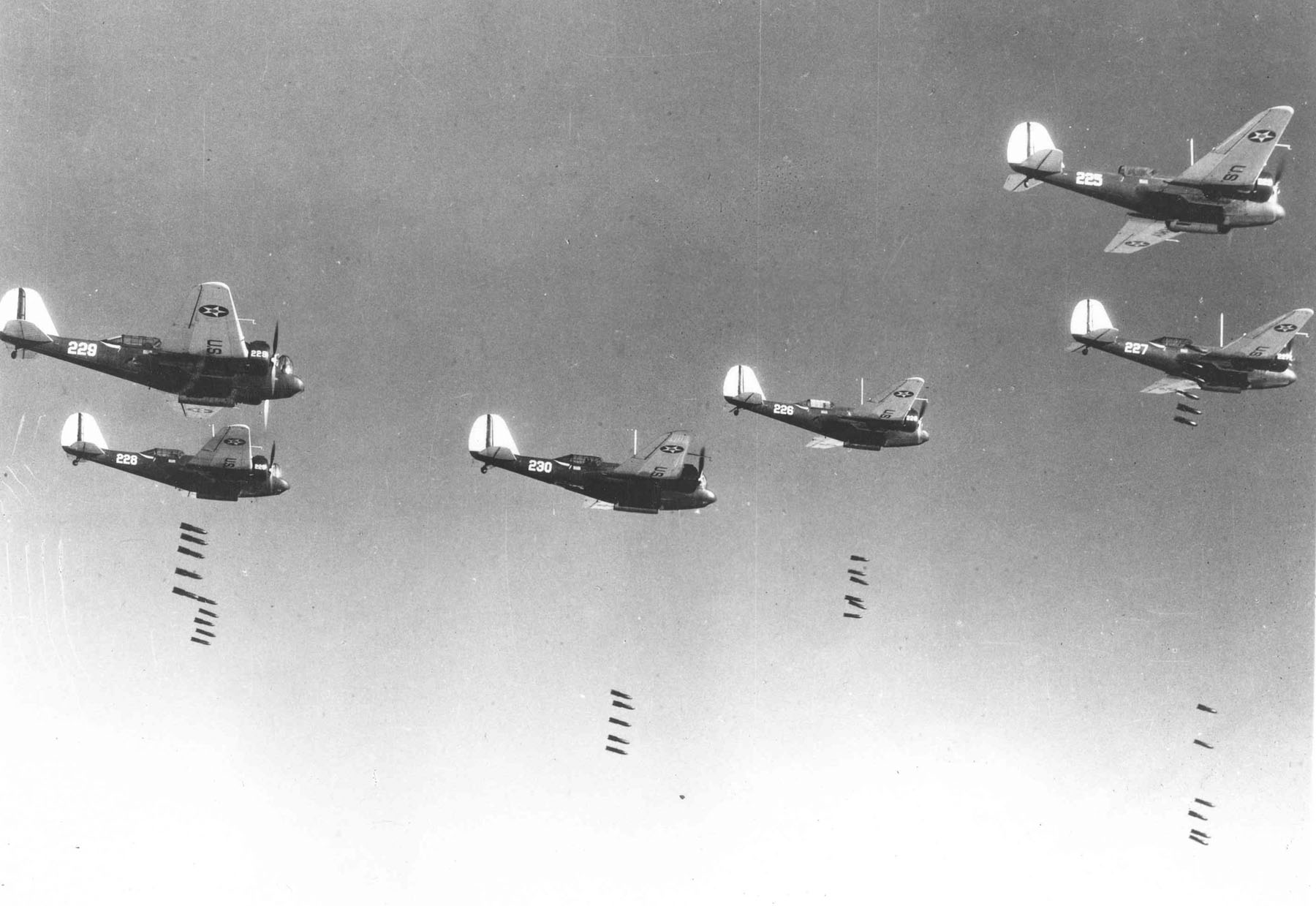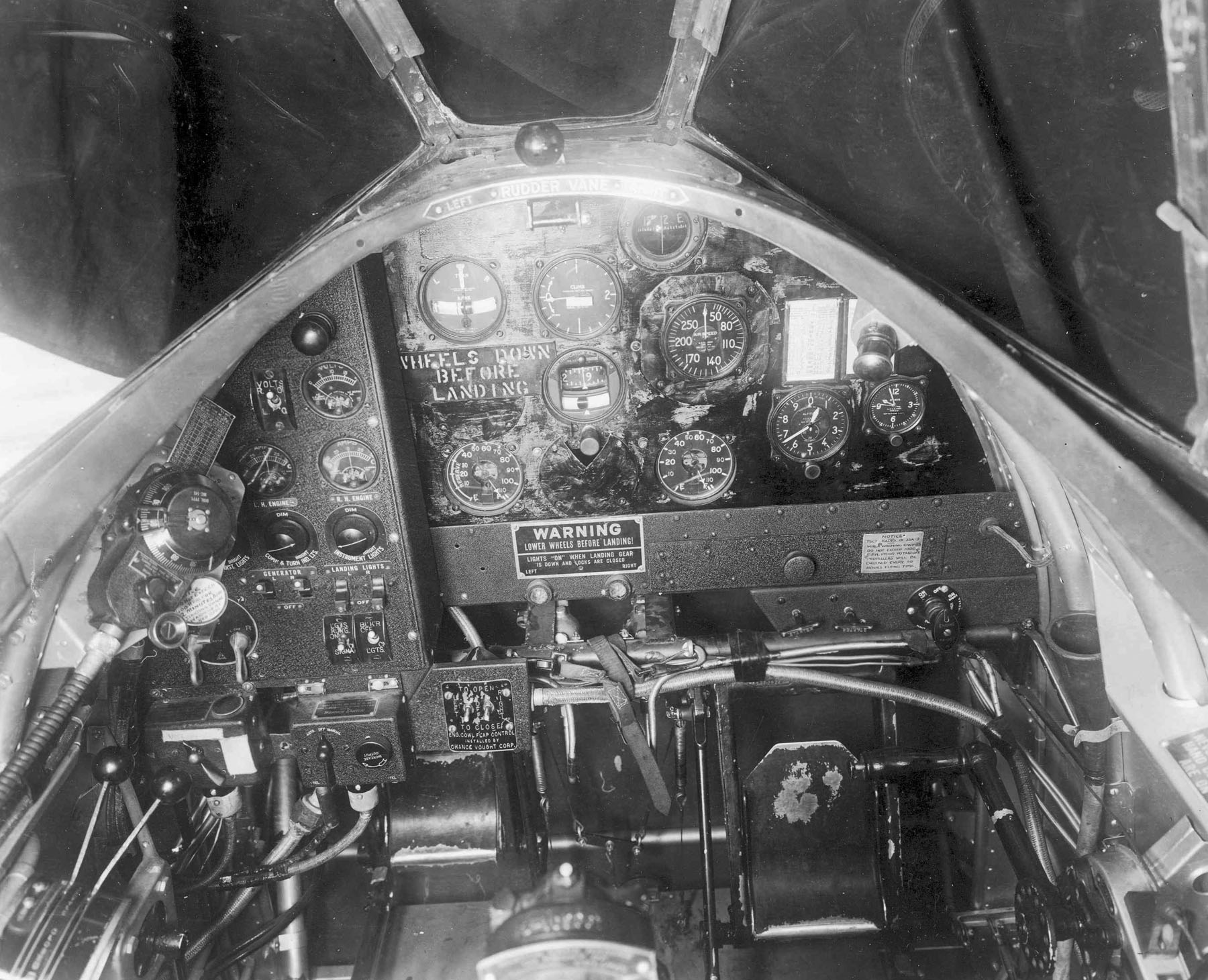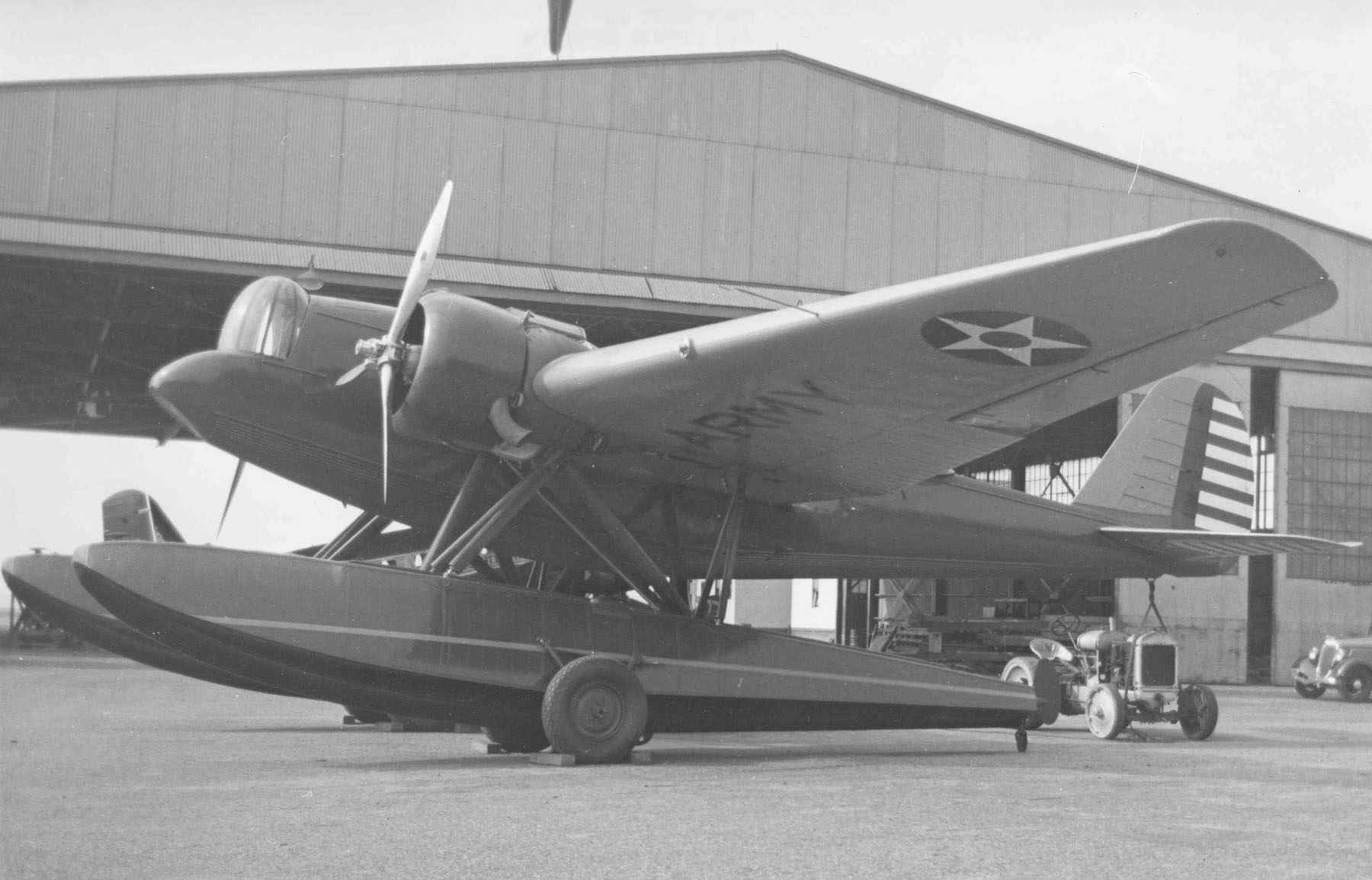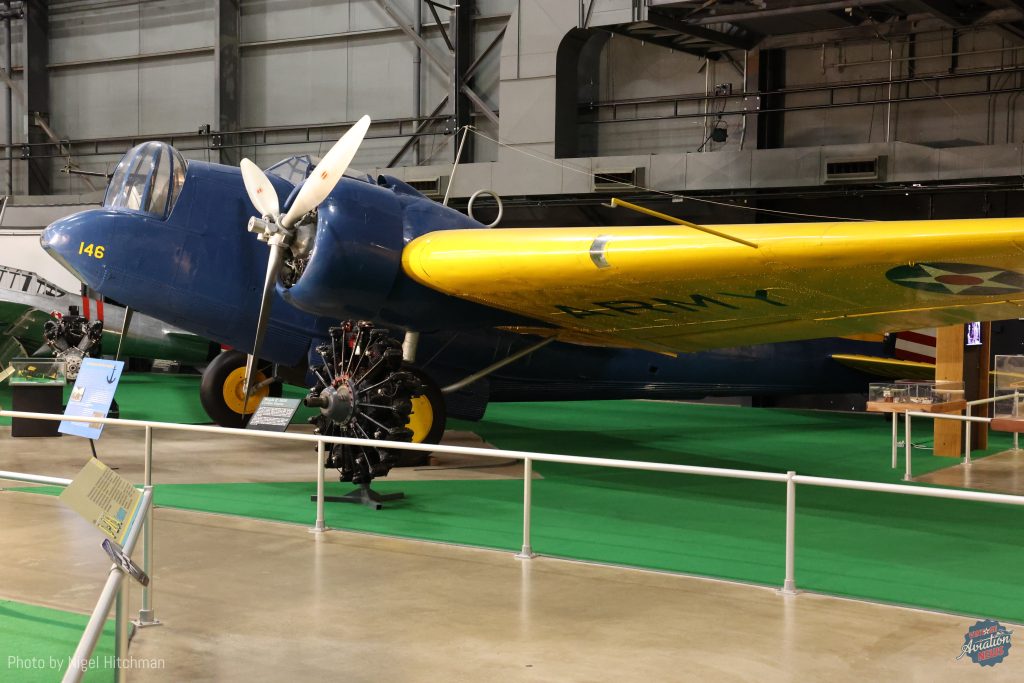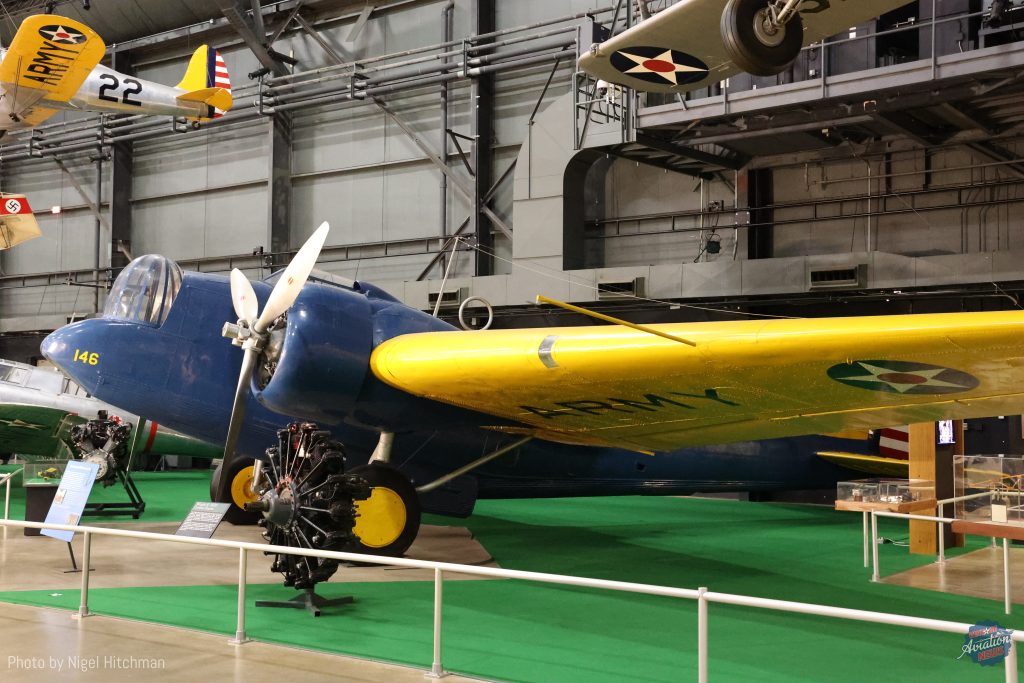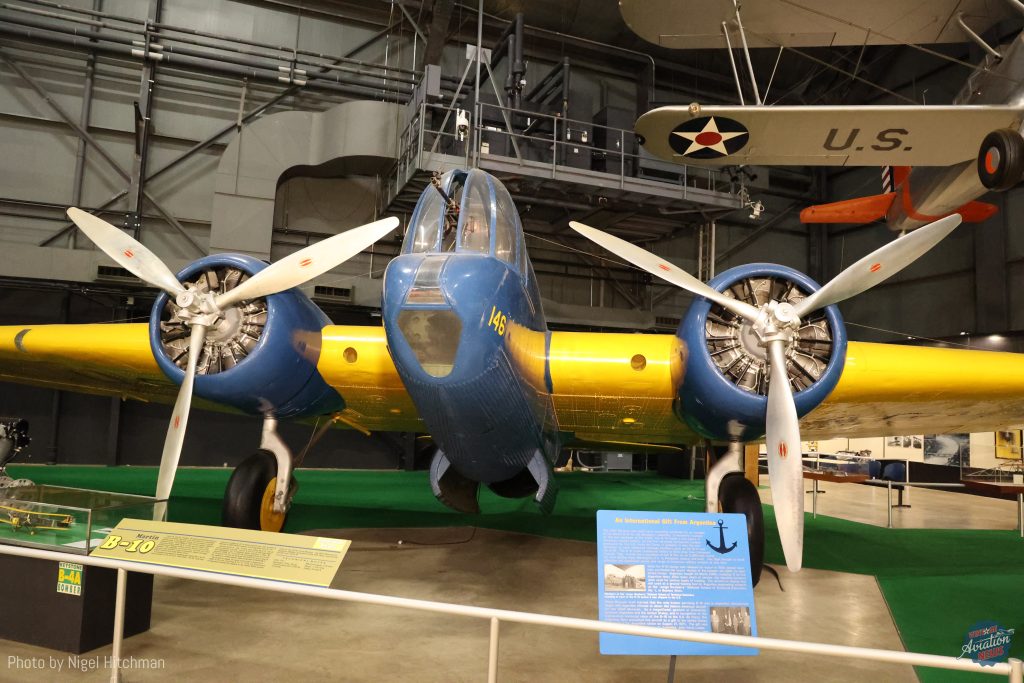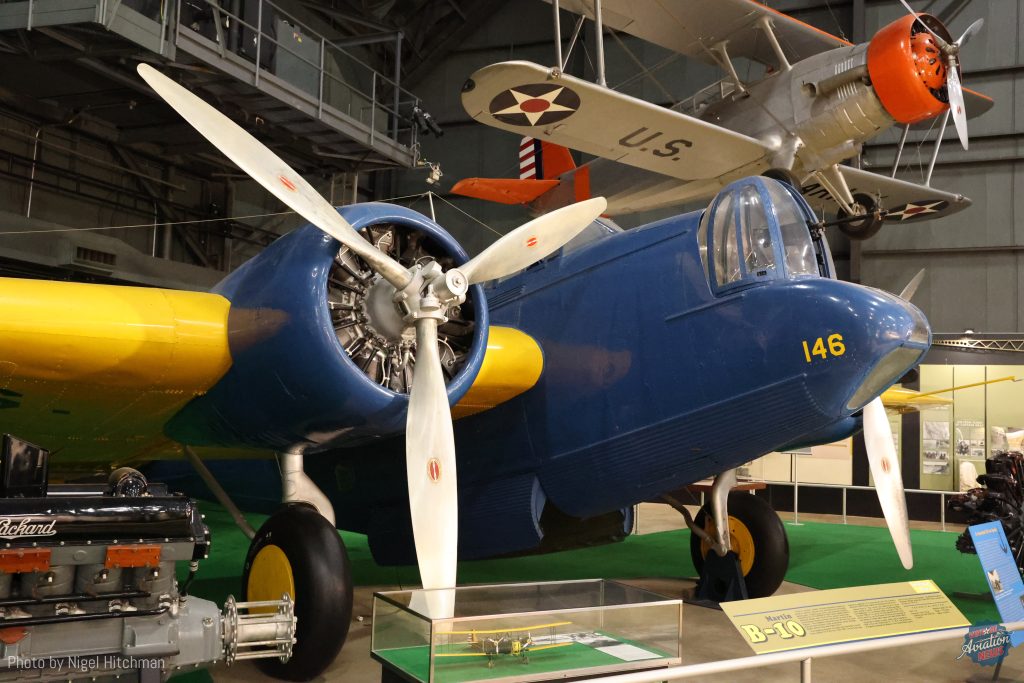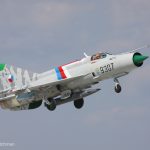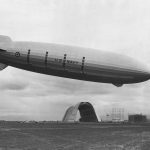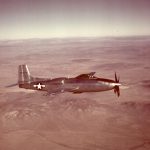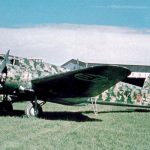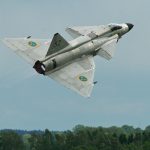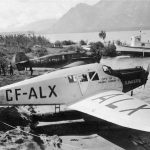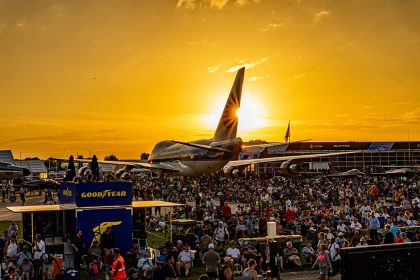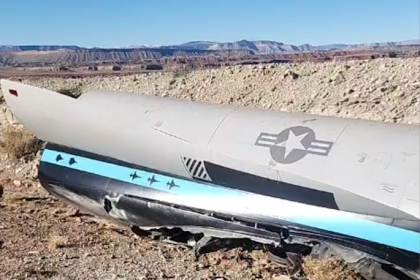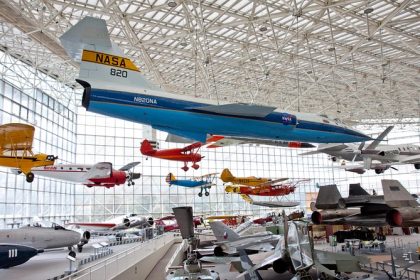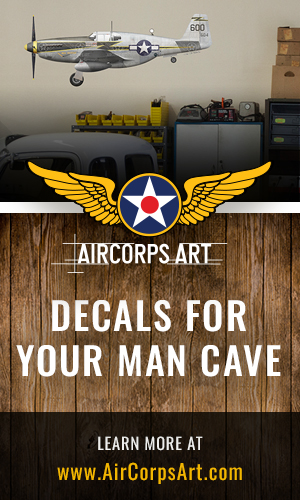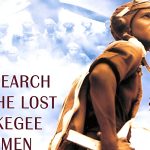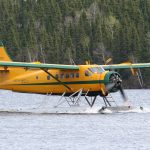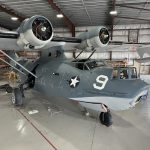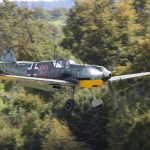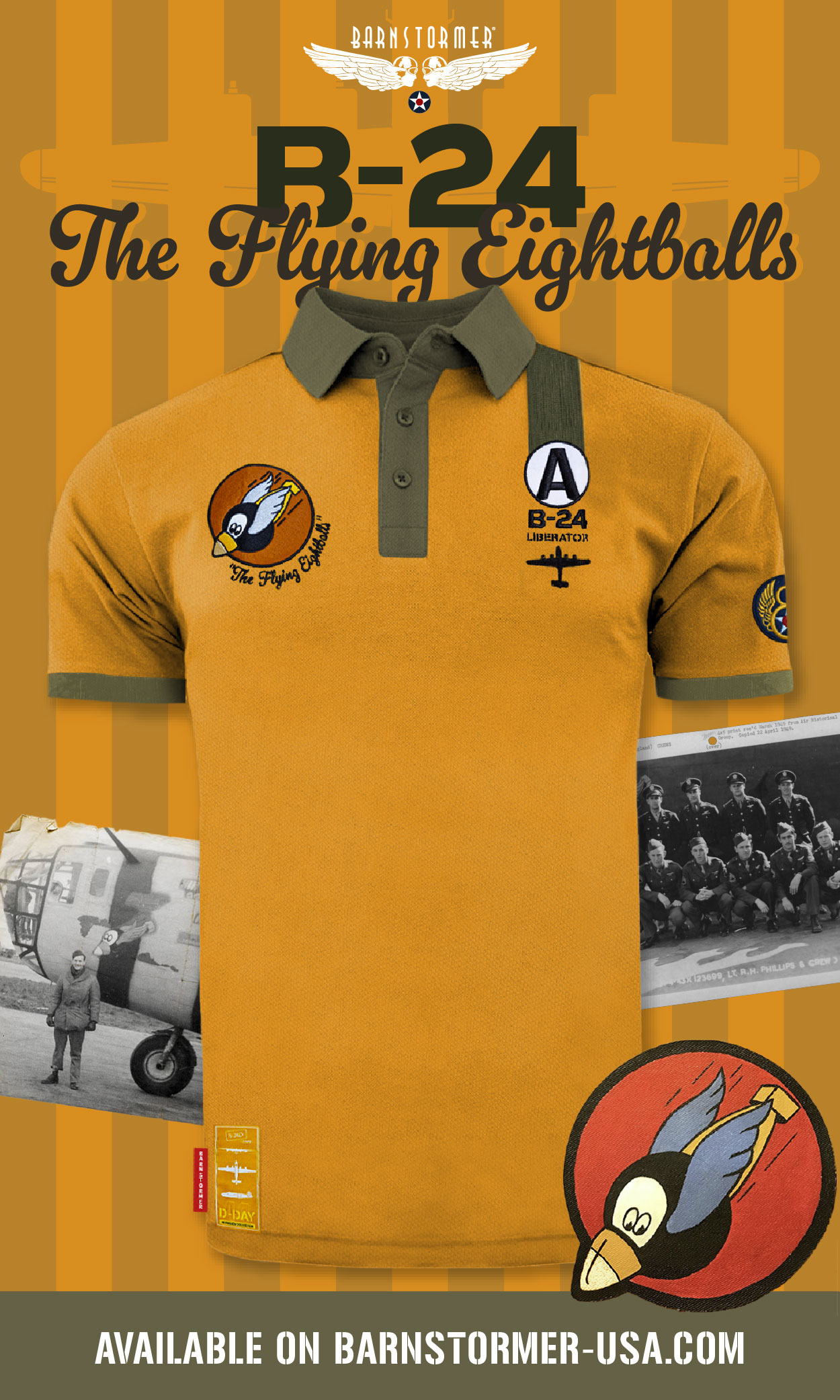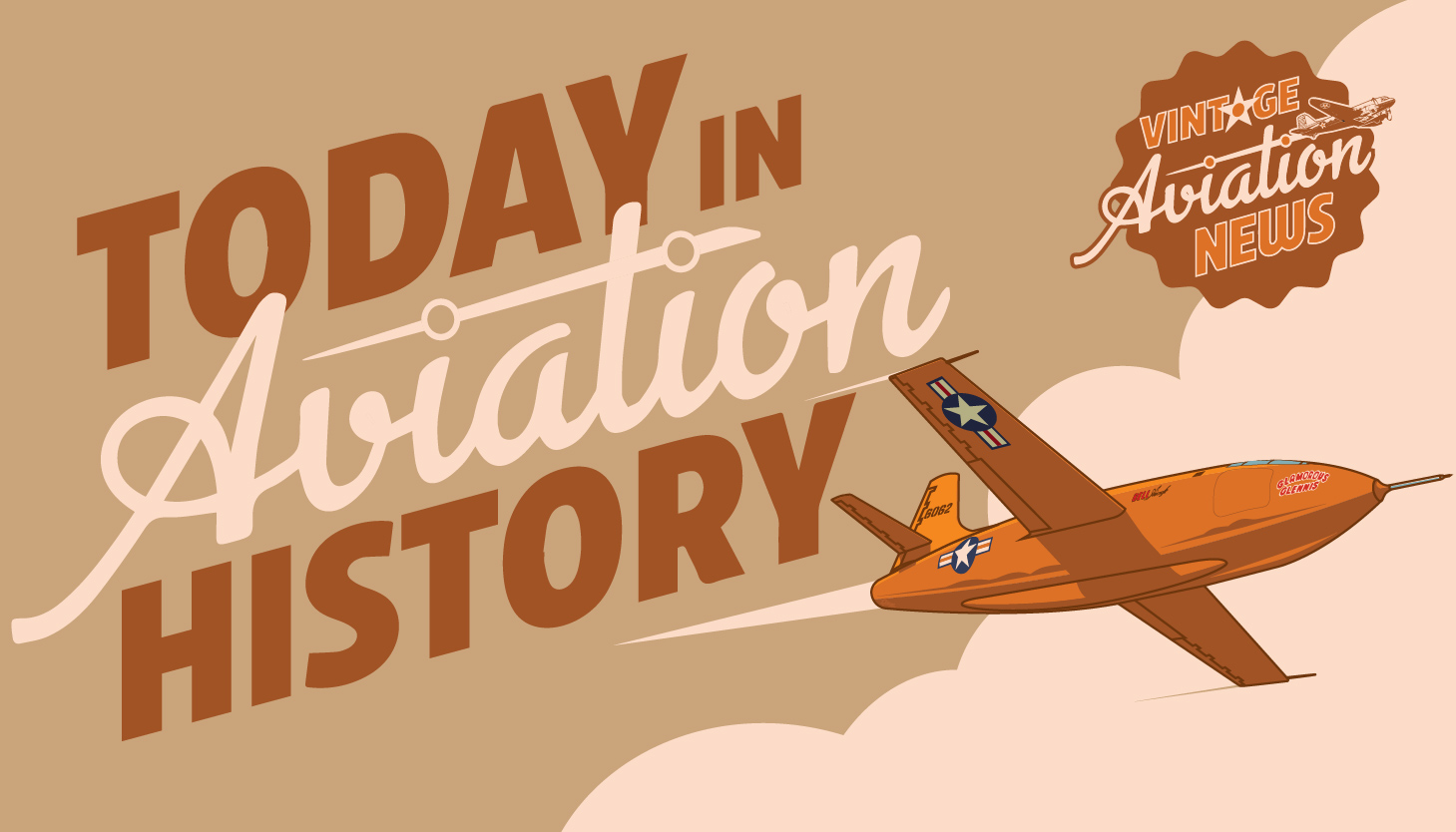
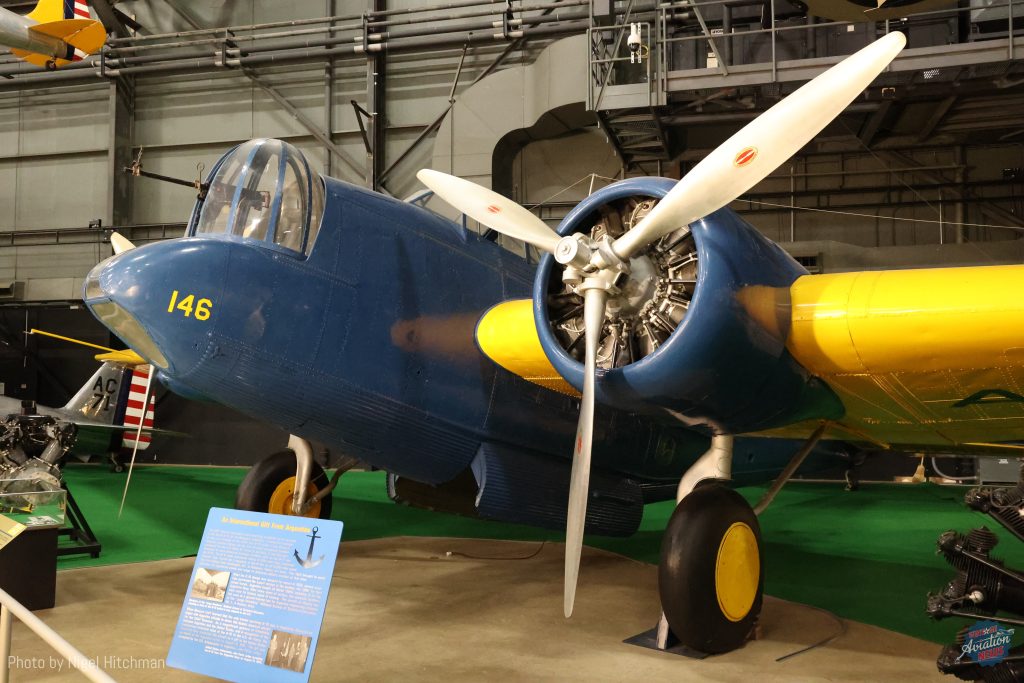
Although the United States was firmly in the grip of the Great Depression, the beginning of the 1930s saw the need to replace the aging wood and fabric biplane bombers of the US Army Air Corps that would not look out of place during WWI, just over a decade earlier. As such, the Glenn L. Martin Company of Baltimore, Maryland, which had been one of the leading developers of American bombers, began work on a radically new design. The company used its own funds to build a prototype for the design they called the Martin Model 123. While the Martin Model 123 had open cockpits for a pilot, nose gunner/bombardier, and rear gunner, it was envisioned that these could be enclosed later in development.
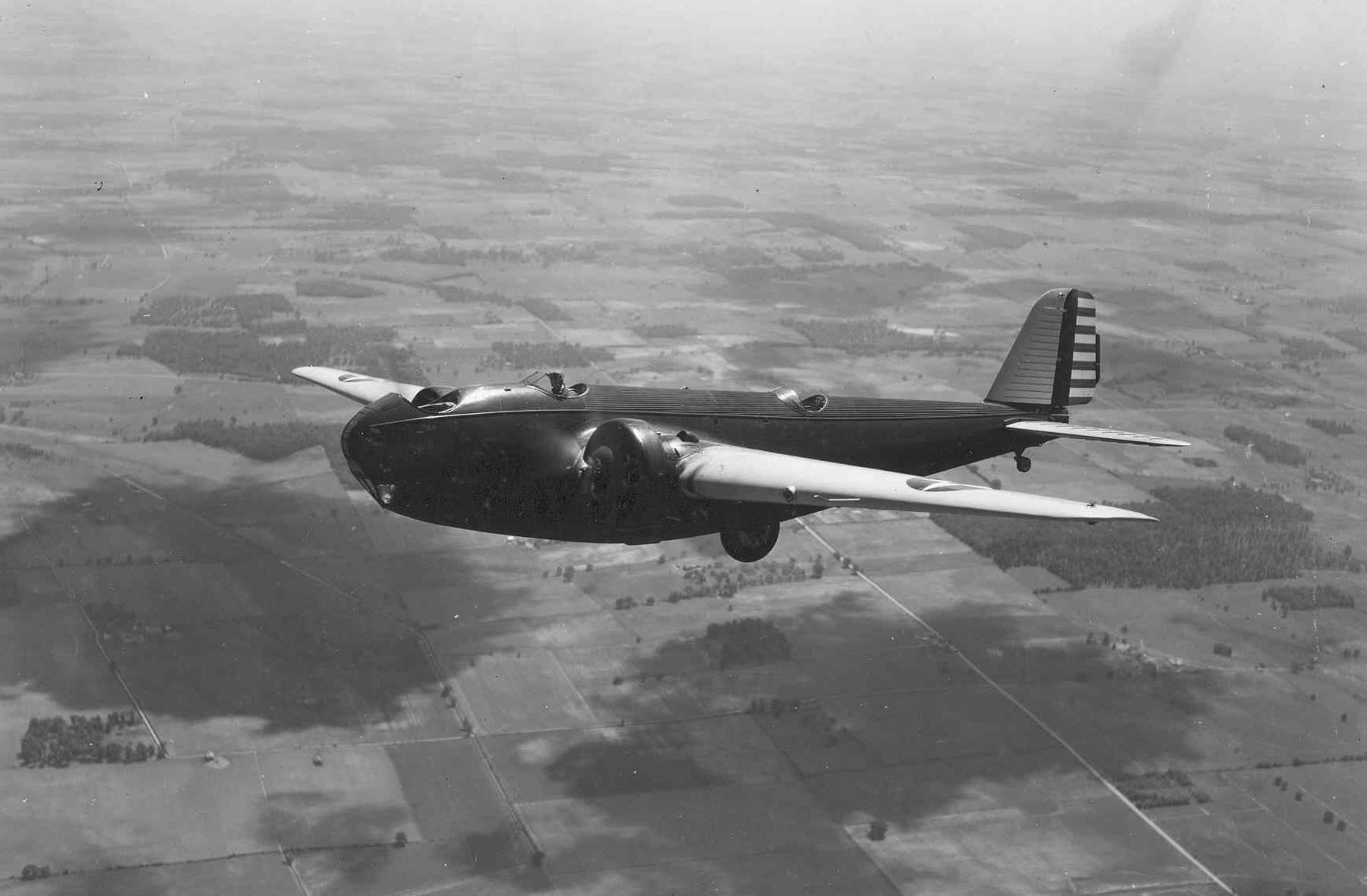
The prototype was still on the cutting edge, however, with regards to its retractable landing gear, all-metal monoplane design, low-drag cowling rings designed by the National Advisory Committee for Aeronautics (NACA) for its Wright R-1820 Cyclone radial engines, and an internal bomb bay, in contrast to most other contemporary bombers that carried their bombs in externally mounted racks. On February 16, 1932 (though some sources state February 26), the Martin Model 123 made its first flight.
On March 20, 1932, the prototype was delivered to Wright Field in Dayton, Ohio, where it began qualification trials under the designation XB-907. During these trials, the XB-907 achieved a maximum speed of 197 mph at an altitude of 6,000 feet, which was better the Army Air Corps’ current biplane fighters. For their achievement, Glenn L. Martin was awarded the 1932 Collier Trophy for the design of the XB-907, which had been redesignated as the XB-907A after it was modified with a longer span of wings, received upgraded Wright R-1820s, had a manually rotated gun turret in the nose, and a new set of cowlings.
On January 17, 1933, the Army Air Corps purchased the XB-907A from Martin and gave the bomber the designation XB-10, serial number 33-139. Simultaneously, the USAAC ordered 48 production aircraft of what Martin now called the Model 139. The first 14 aircraft in this batch were the YB-10s, which featured plexiglass sliding canopies over the cockpit and the rear gunner’s compartment, the latter of which was further modified to become the aircraft’s radio compartment. The YB-10 could carry an internal bomb load of two 1,130-pound bombs or five 300-pound bombs, while modifications were made for an external bomb shackle under the right wing’s center section for a single 2,000-pound bomb. Defensive armament consisted of three Browning M1919 .30 caliber machine guns (one in the nose turret, one in the dorsal gunner’s position, and a ventral mounted gun for the rear gunner to shoot aircraft coming from the bottom up towards the aircraft.)
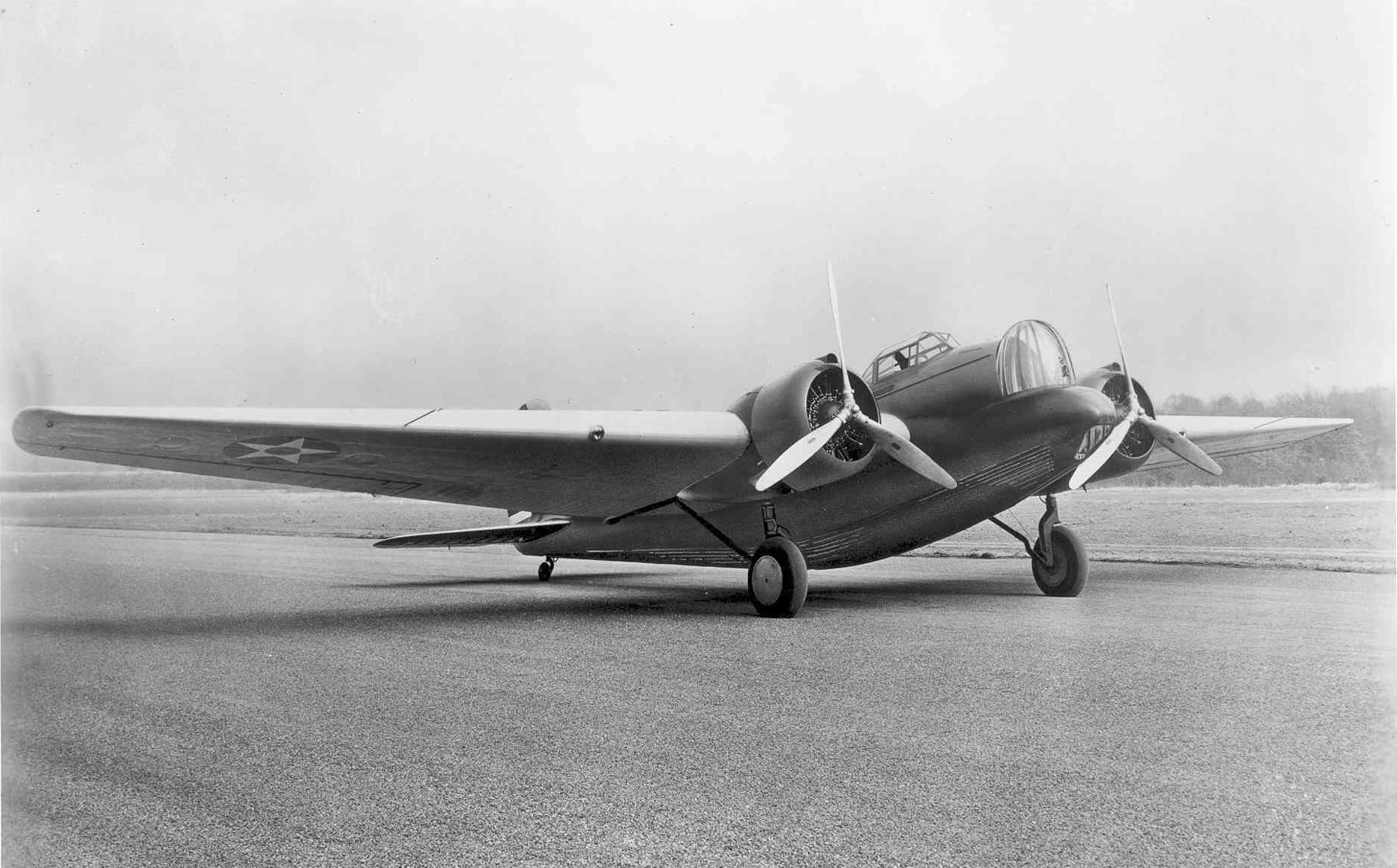
Meanwhile, two aircraft from the initial batch, 33-154 and 33-162, were selected for further testing as the YB-10A and XB-14 respectively. YB-10A 33-154 was used for testing turbosuperchargers for the R-1820 engines, reaching a top speed 236 mph at 25,000 feet. Despite its success, the turbosuperchargers of the time proved too reliable to be accepted in operational service, and the aircraft was returned to its standard YB-10 configuration and flown in operational service, while XB-14 33-162 was fitted with a pair of R-1830 Twin Wasp radial engines for flight evaluations at Wright Field.
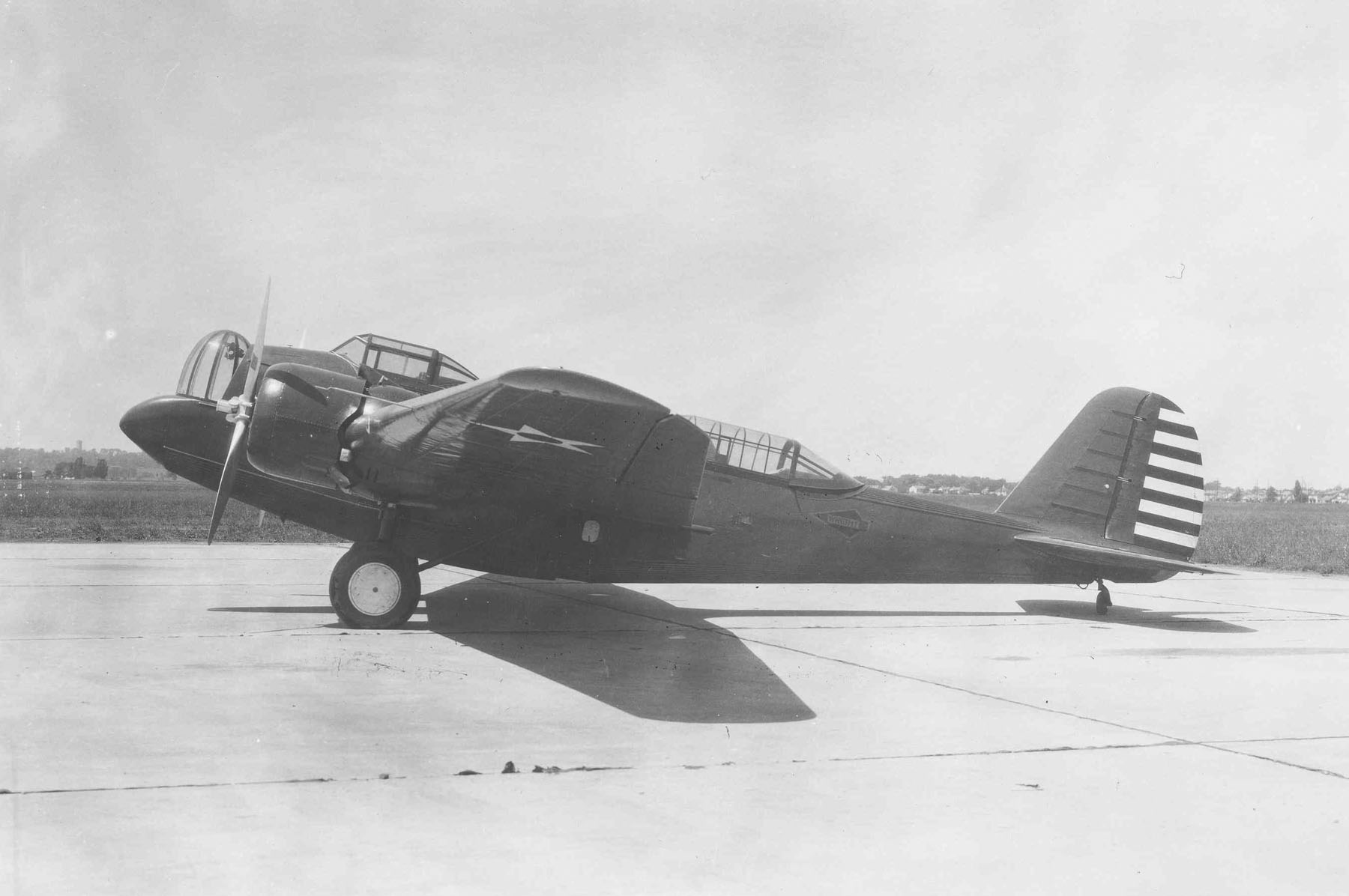
Of that initial order of 45 production aircraft, 32 of them were built as the B-12, which were distinguished by their Pratt & Whitney R-1690 Hornet radial engines, which often served alongside the first production variant of the Martin B-10, the B-10B, which 103 were constructed. In all, a total of 165 aircraft were delivered to the USAAC.
During the mid 1930s, the Martin B-10s were flown at Army airfields across the United States, namely March Field in Riverside, California, Langley Field, Virginia, and at Mitchel Field, Long Island, New York. Army Air Corps B-10s also served overseas in Hawaii, the Panama Canal Zone, and the Philippines (which had been granted commonwealth status by the US government). Some YB-10s and B-12As were even fitted with pontoon floats for coastal patrol.
One of the memorable achievements made by the Martin B-10 was the 1934 Alaska survey flight. In the wake of the Air Mail scandal, in which the new administration of President Franklin D. Roosevelt had cancelled all air mail contracts for an ill-prepared Army Air Corps to take over the air mail routes in severe winter weather at night, resulting in numerous accidents and the loss of thirteen airmen, the Army decided to publicly demonstrate the navigational capabilities of its B-10 pilots and navigators by organizing a mass formation flight from Bolling Field, Washington, D.C., to Fairbanks, Alaska, and back. In command of the operation was Lieutenant Colonel Henry “Hap” Arnold, future Chief of Staff of the US Army Air Forces during WWII. Ten B-10s left Bolling Field on July 19, 1934, arriving in Fairbanks on July 24. On August 16, 1934, they set off on their return to Washington, and arrived there on August 20 by way of Seattle, Washington, and Omaha, Nebraska, having finished their round trip of over 7,000 miles. For leading his airmen and their B-10s on this feat, Lt. Col. Arnold was awarded 1934 Mackay Trophy.

The Martin B-10 made a further splash in the American press in February of 1936 when heavy ice in the Chesapeake Bay prevented ship access to Smith Island, Maryland, and Tangier, Virginia. Without these ships, the residents of the islands lacked any means of resupply and faced starvation. It was then that the 49th Bomb Squadron was called into action. After using their Keystone B-6A biplane bombers, the 49th Bomb Squadron flew 13 Martin B-10s to drop food and supplies to the people of Tangier and Smith Islands, with additional supplies having been dropped by the Goodyear Blimp Enterprise.
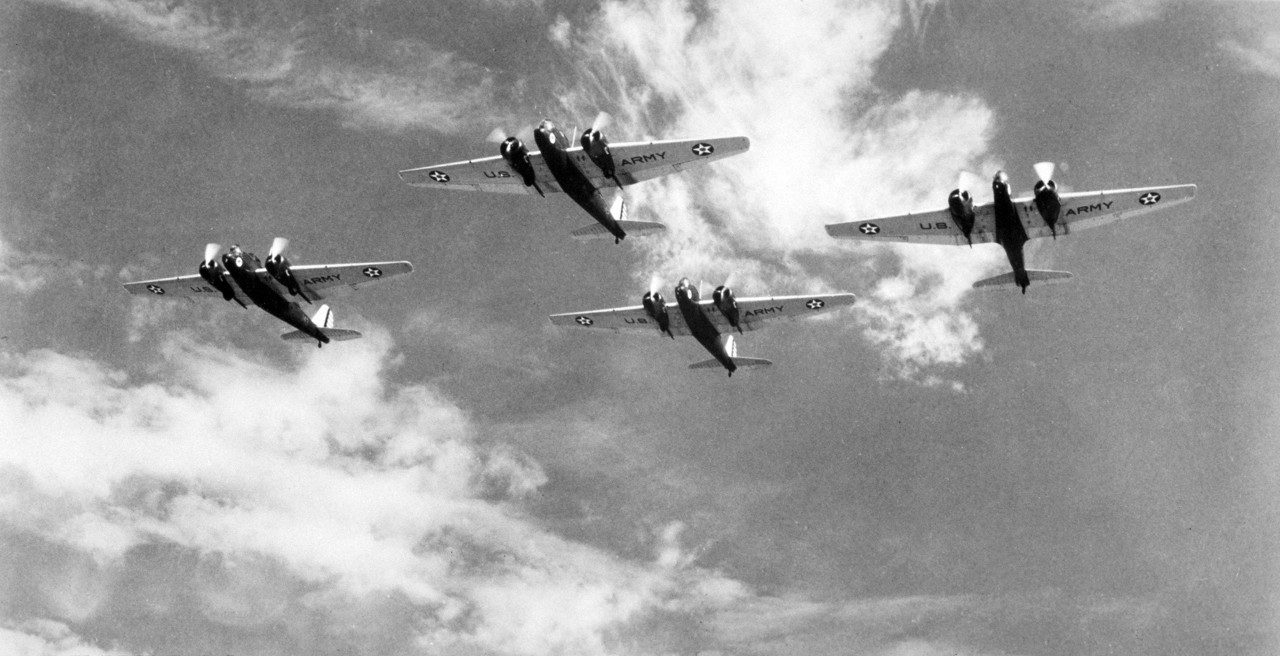
Following the domestic success of the Martin B-10, many foreign governments placed contracts with the Glenn L. Martin Company to build aircraft for them, and once the USAAC had received its full order, and began looking for a new bomber, Martin was allowed to export the aircraft under the company designation Martin Model 139. The first to fly the aircraft in combat was the China Nationalist Air Force (Republic of China Air Force), which received a total of nine Martin 139WC aircraft (six being delivered in February 1937 and three in August 1937). At the time, it was the fastest bomber in China. When the Japanese initiated the Second Sino-Japanese War on July 7, 1937, the Chinese Martin bombers were called upon to defend China against the invading Japanese, serving in night bombing and maritime reconnaissance missions.
On August 25, 1937, two Martin 139WCs and three Heinkel He 111As flew from Nanjing to bomb Japanese landing forces at Liuhe, Taicang, near Shanghai. The two Martins managed to escape the pursuing Japanese fighters, but two of the three Heinkels were forced to crash land. Two months later on October, three Martin 139WCs were among several bomber types sent to continue bombing the Japanese positions at Shanghai, but in spite of their efforts, the Japanese secured a foothold in Shanghai and advanced inland.
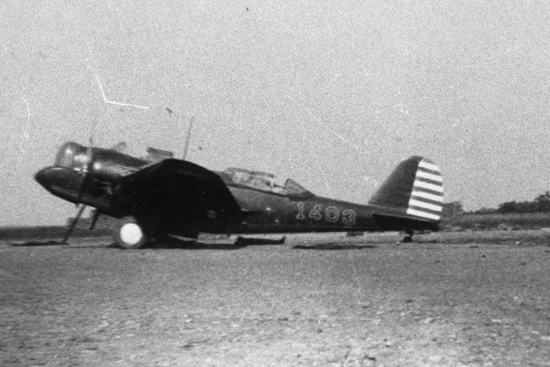
On May 20, 1938, the Martin 139WC became the first aircraft to conduct an air raid on the Japanese Home Islands. Two Martins (unit numbers 1403 and 1404), flown by Capt. Xu Huansheng and Lt. Tong Yanbo of the 14th Bomber Squadron, set off from Wuhan Wangjiadun Airport on May 19 to land at an auxiliary airfield in Ningbo some 700 kilometers to the east in order to stage a night mission over the Japanese island of Kyushu. The two Martins they set off for Nagasaki, 885 kilometers (550 miles) away, arriving over the city at 2:45am.
After dropping flares, the bomber dropped leaflets over Nagasaki, then did the same over Fukuoka and Saga. The leaflets contained details of Japan’s horrific war crimes in China and were intended to stir the hearts and minds of the Japanese civilian population. Despite Japanese air defense units ordering a blackout, Xu and Tong used this opportunity split off and conduct reconnaissance over Japanese commercial, military, and industrial sites before rendezvousing at 3:32am and plotting a course for home. Though they were fired upon by Japanese warships off the coast of Zhejiang, they suffered no damage, and no Japanese aircraft were able to catch them.
Martin 139W #1404 landed at Yushan Airbase at 8:48am and aircraft #1403 landed at Qingyunpu Airbase at 9:32. After refueling, they both landed at Wuhan Wangjiadun Airbase at noon on May 20, and were celebrated as heroes by the beleaguered Chinese public, feeling a sense of repayment of what the Japanese were doing during the war, even if the fighting was far from over. Xu Huansheng later went to Taiwan and served as Commander-in-Chief of the Republic of China Air Force (ROCAF).
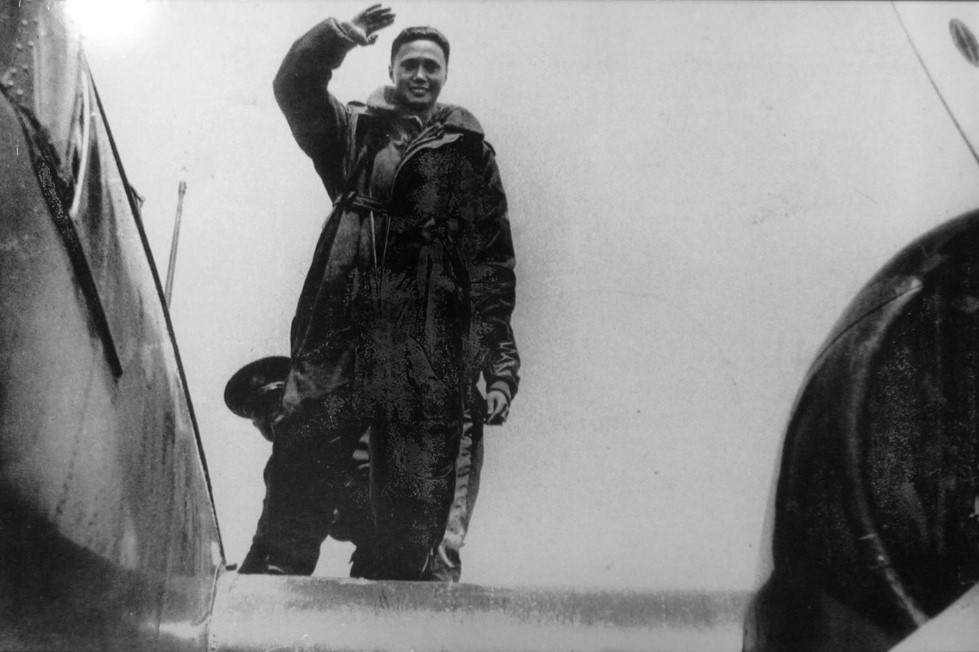
In July 1935, the Spanish Republic purchased a production license in for the Martin 139. In January 1936, the Spanish Air Force signed a contract with Construcciones Aeronáuticas SA (CASA) to build 50 examples, but when the Spanish Civil War broke out that summer, the US State Department withdrew authorization of the license in an effort to maintain US neutrality. Nevertheless, when the Soviet Union sent examples of the Tupolev SB bomber to fight in Spain, Spanish Nationalist forces supported by Fascist Italy and Nazi Germany confused the Tupolevs for Martin 139s, and even when their error was realized, the German and Italian pilots often continued calling the Tupolev SB the “Martin” bomber.
In September 1937, the Republic of Turkey received 20 Martin 139WTs, and assigned them to the 55th and 56th Tayyare Bölüğü (Aviation Squadrons) of the 9th Tayyare Taburu (Aviation Battalion). As Turkey remained neutral through most of WWII (it only joined the Allies in February 1945 to gain a favorable position in the postwar world, and never sent any soldiers to fight), the Turkish Martin 139WTs were used to patrol the Black Sea before being replaced by Bristol Blenheim and Beaufort bombers in 1944, though they remained in reserve units until they were retired in 1946.
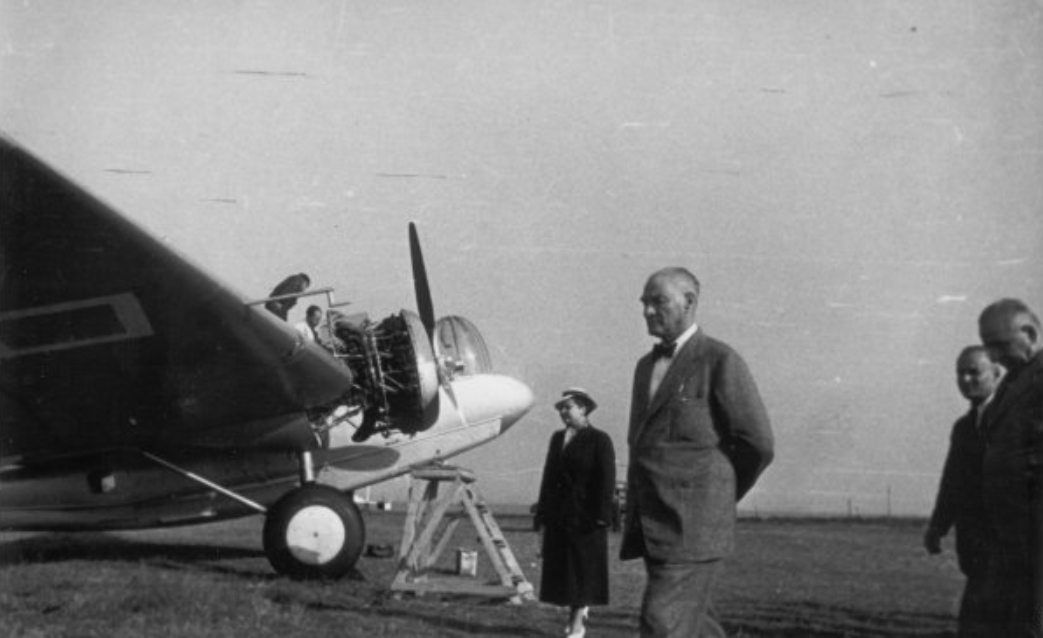
By the mid-1930s, the rapid advancements in aviation technology meant that the original B-10 design would need to be replaced by aircraft that could fly further, higher, and faster than the B-10. The Glenn L. Martin Company attempted to develop a replacement for the Model 139 with the Model 146, which was sent to Wright Field to compete against the Douglas DB-1 and the four engine Boeing Model 299. Both the Boeing and Douglas aircraft demonstrated greater performance than the Martin 146, and with the crash of the Boeing Model 299 at Wright Field on October 30, 1935, the Douglas DB-1 was declared the winner and became the B-18 Bolo, which would phase the Martin B-10 from service in frontline US bomber units. However, because the Boeing entry had the best performance until its loss, 13 pre-production prototypes based on the Boeing 299 were ordered by the Army Air Corps, which became the basis for the B-17 Flying Fortress. Although the Martin 146 failed to win the competition, the lessons Martin learned from this aircraft were applied to the development of a new bomber, the Martin B-26 Marauder.
Another customer for the Martin 139 was the Netherlands, which chose the American bomber over the indigenous Fokker T.V, which was designed and built after the Martin 139, but was of steel tube and fabric construction rather than being made of all-metal. Another reason for accepting the Martin over the Fokker T.V was that the Fokker had yet to enter service and production, while the Martin 139 was already a proven design.
The Netherlands received an initial batch of 12 Model 139WHs in 1936, which were then shipped to the Dutch East Indies (modern-day Indonesia) to join the Royal Netherlands East Indies Army Air Force (ML-KNIL). These were then followed by a further 26 in December 1937. In 1938, Martin modified the Martin 139WH design to create the Martin 166 (also called the 139WH-3). It had a redesigned set of wings and nose, bomb shackles on the underside of the wing center section between the engine nacelles and the fuselage, a single ‘glass house’ canopy that united the cockpit with the rear gunner/radio/navigation compartment, and improved Wright R-1820 engines.
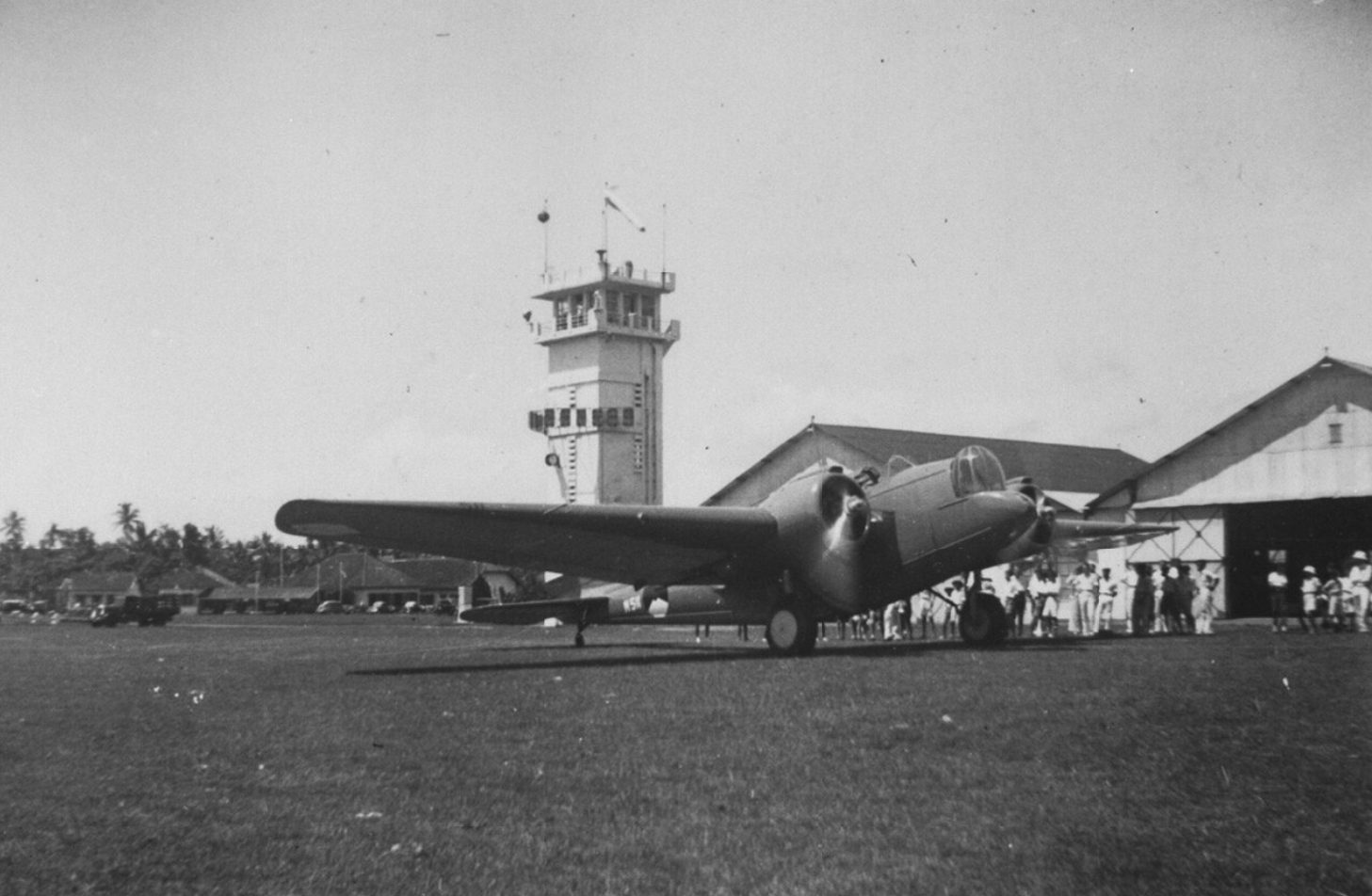

By the time war with Japan broke out in December 1941, Martin 139s were still in service throughout the Pacific and Southeast Asia. In the Philippines, the Philippine Army Air Corps and US Army Air Force maintained B-10s in service, but these were largely destroyed on the ground by Japanese air attacks. The largest operator of the old Martin bombers was still the Royal Netherlands East Indies Army Air Force, with the 1st, 2nd, and 3rd Aircraft Groups (Vliegtuiggroep) distributed throughout the East Indies.
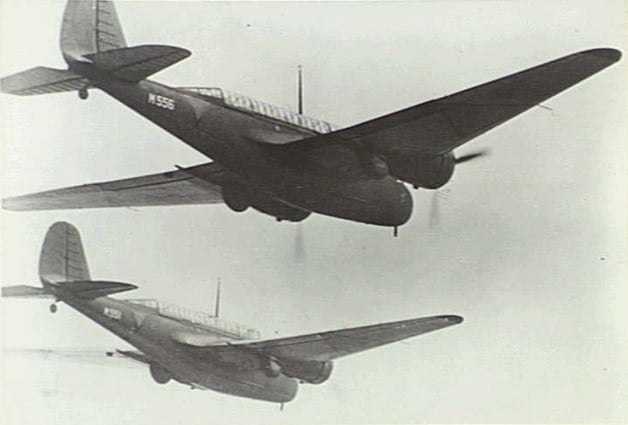
In addition to attacking Japanese landing forces in the Dutch East Indies, Dutch Martin bombers were used to defend British Malaya from the Japanese. However, the Japanese brought their most advanced aircraft to take the Dutch East Indies, including the Mitsubishi A6M Zero, whose two 7.7mm machine guns and two 20mm cannons made quick work of the Martins, which had been surpassed in terms of defensive armor and armament. While most Martin 139WHs and Martin 166s were lost in the ill-fated defensive campaign to defend the Dutch East Indies. One example, tail number M-585, c/n 843, was flown by its crew to Australia on March 8, 1942, and was later requisitioned by the US Army Air Force in Australia and given the serial number 42-68358 and was flown by the USAAF until it was stricken from the inventory in August 1944.

The Japanese also captured several Martin 139s in the Dutch East Indies, but aside from flight testing, had no further use for them. Nine examples, though (according to Gerald Casius in an article for Air Enthusiast magazine), were handed to the Royal Thai Air Force, which already had three Model 139WSMs that had been delivered from Martin in 1937 and used these in the brief Franco-Thai War of 1940-1941. After the war, the Thai Martins remained in use until 1949.
Among the longest-serving foreign operators of the Martin B-10/Model 139 was Argentina, which ordered two separate variants for its Army Aviation and Naval aviation branches. The Army variant became the Martin 139WAA, and the Navy variant the Martin 139WAN. Among the Army’s Aviation branch, there were 22 aircraft flown in service, while the Navy had 12 examples. During WWII, the Argentine Martins were used to patrol the coast for German U-boats. Later, the Argentine Army Martin 139WAAs had their nose turrets redesigned.
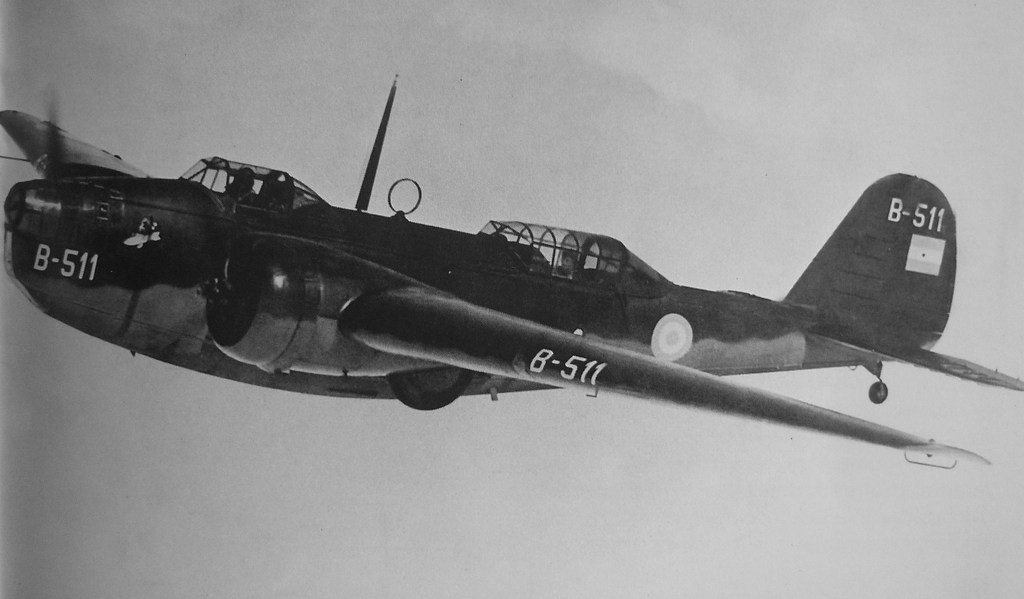
After WWII, the Martin bombers were gradually replaced in favor of new aircraft, with the Army’s Martin 139WAAs being relegated to target towing duties at the El Plumerillo Air Base until the last examples were retired by 1954.

The sole remaining intact survivor of the Martin B-10 family can be found at the National Museum of the United States Air Force at Wright-Patterson Air Force Base, Dayton, Ohio. This example, however, was originally built with the construction number 715 as part of an export order for the Argentine Naval Aviation branch as a Martin 139 WAN bomber. Shipped from the Martin company’s plant in Baltimore aboard the steamship SS Rugeley, it arrived in Argentina in November 1937 and received the serial number 0080, fuselage code 2-B-1 when it was taken on strength with the Argentine Navy. After patrolling the Argentinian shores during WWII, it was reclassified with the fuselage code 3-B-6 before it was officially retired from flight duties in 1949, having logged a total of 1,297.30 flight hours. Instead of being scrapped, the aircraft was made an instructional airframe at the Jorge Newbery No.8 Technical School in Buenos Aires, named for pioneering Argentinian aviator Jorge Newberry. There, the old Martin bomber was used for instructing students in aviation maintenance until the National Museum of the United States Air Force (then called the United States Air Force Museum) in Dayton, Ohio was made aware of the aircraft’s existence.
Having scrapped the remainder of their B-10s and B-12s, the US Air Force was eager to find a surviving example of its first mass-produced all-metal bomber to be placed on display at the newly moved museum, and the example in Argentina was the only surviving example. Negotiations between the Americans and the Argentinians resulted in a law being signed by Argentina’s President Brigadier General Roberto Marcelo Levingston on June 30th, 1970, that allowed for the transfer of the Martin 139 WAN to the United States, but on the condition that the aircraft retain its Argentine Naval Aviation colors. On August 21, 1970, U.S. Ambassador to Argentina, John Davis Lodge, accepted the aircraft from Argentina on behalf of the United States government, and by October, the aircraft had been brought to the USAF Museum in Dayton.
In July 1973, the unrestored aircraft was transported to Kelly Air Force Base in San Antonio, Texas to receive an intensive restoration by members of the 96th Mobile Maintenance Squadron, Air Force Reserve (AFRES) and civilian volunteers working weekends. Such was the dedication of the team that three reservists signed on to continue their service in the Air Force Reserves in order to see the project to completion. The restoration, which initially had no reference materials until the Air Force Museum sent them a B-10 maintenance handbook, a pilot’s handbook, a structural manual, and numerous photographs, took three years to complete, and on June 5, 1976, the restored Martin 139/B-10 had its wings detached and was loaded into the cargo bay of a Lockheed C-5 Galaxy to take on last flight back to Dayton. Later, it was placed on display in the museum’s Early Years Gallery, where it stands there to this day.
In 1985 the remains of Martin 139WH-2 Serial Number M-531, which had been missing in action since February 16, 1942, when it failed to return from a bombing mission against a Japanese convoy off Muntok, Bangka Island, which itself is near Sumatra Island, were discovered in a mangrove swamp by the Indonesian Air Force. In addition to finding and recovering the remains of the Dutch crew, portions of this aircraft have been placed on display at the Nationaal Militair Museum in Soesterberg, the Netherlands.
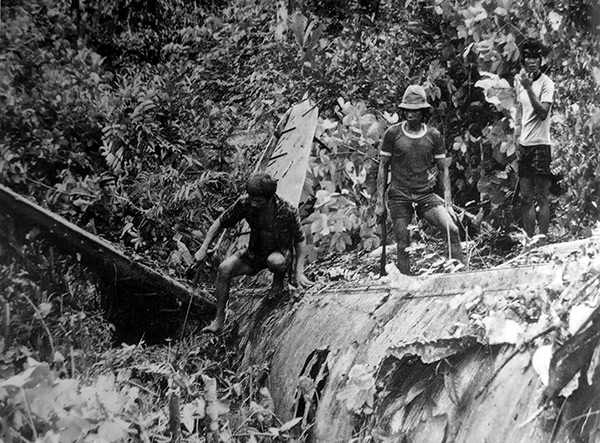
The Martin B-10 was a pioneering aircraft that led the way for the all-metal bombers of the 1930s, and its development and operational use would lead to new bombers that would serve through the course of WWII. Yet still, the Martin B-10 remains a subject of interest for military aviation historians to this day.
Today in Aviation History is a series highlighting the achievements, innovations, and milestones that have shaped the skies. All the previous anniversaries are available HERE







